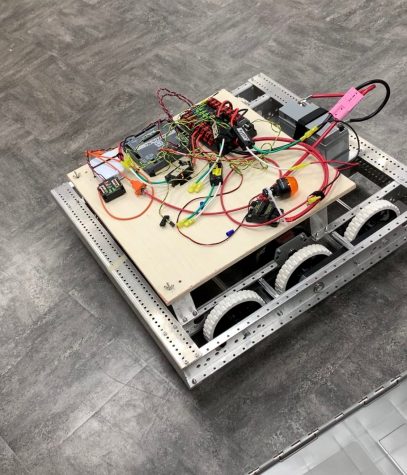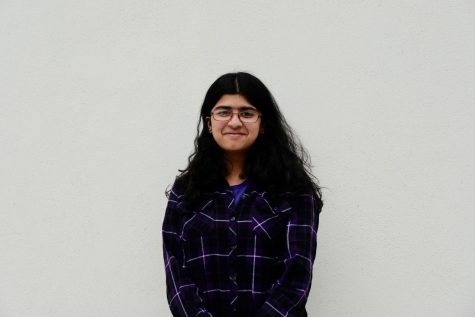Keystone’s Inaugural Robotics Team: Reaching for the Skynet

Keystone is known for being a STEM school. We have science from science fair, math from AMCs and MathCounts, but where do the technology and engineering aspects of STEM come into play? A group of sophomore students was asking the same questions: as a consequence, they decided that they’d start a group to add STEM’s T and E to Keystone.
Their solution: Create a FIRST Robotics Competition (FRC) Team for Keystone. FIRST inspires to celebrate engineering like one celebrates football: a huge competition with fans and teams working together in a huge competition. In a span of six weeks, high school teams are given a set of challenges and must create robots that weigh up to 120 pounds (excluding the battery) which will then be able to compete with other robots to earn a maximum number of points. All of this comes together during t
This year’s challenge:
- Have the robot shoot balls into a low goal (1 point), a high goal (2 points), or an inner high goal (3 points)
- Once 20 balls have been scored, spin a color wheel a certain number of times and to a certain color (10 points the first time, 20 points the second time)
- Have the robot hang on a hanger-like contraption (25 points)
 During the competition, teams are randomly grouped with others to form alliances, with three teams per alliance. Two alliances compete against each other during a match (which lasts 2 minutes and 45 seconds) to earn the maximum number of points. The scores are the sum of the points each of the robots obtains in the alliance.
During the competition, teams are randomly grouped with others to form alliances, with three teams per alliance. Two alliances compete against each other during a match (which lasts 2 minutes and 45 seconds) to earn the maximum number of points. The scores are the sum of the points each of the robots obtains in the alliance.
This year, Keystone’s FRC team, known as Reaching for the Skynet (RfS), plans to send a pilot team to this robotics competition. Having received the challenge on the first Saturday of January, the members of RfS have worked on building and assembling a basic drivetrain and are working on a climb mechanism, a ball intake, and a shooter or canon for the balls. They are controlling their robot with an Xbox controller, which has been configured. The team is constantly learning as they explore this new competition. They’re learning what a PDP (power distribution module) is, how to update Victors (a type of motor controller), and how to design a functional robot.
For RfS, the path to becoming a robotics group has not been easy. A rookie robotics group requires about $6,000 just for entry. That plus any amount for extra pieces and parts, and the cost easily goes up to $10,000 and more. To make this money, the team has applied to grants and contacted local companies for sponsorships. RfS has earned a $6,000 grant from the Argosy Foundation and has earned three additional sponsorships. In addition, robotics requires space. At first, the team had worked in a clinic; however, a week into the Build Season, they were notified that they could not long practice there. They then moved out in a day to Mrs. Steinhelper’s room, which is where they currently practice. Working from a school classroom and lacking basic tools isn’t necessarily ideal, but the team is working with what they have and taking what they can.
RfS is looking forward to a great season and starting a legacy for Keystone in the FIRST Robotics Competition.

Shreya Chaudhary is a senior planning to major in data science or computer science. She interns with TigerGraph, promotes and tutors women in STEM through...
